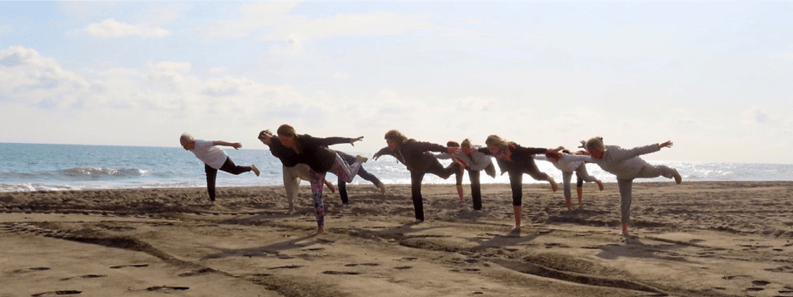Many masters of their field will tell you that they originally found themselves in their profession and passion at a young age. Teacher Dong Xinjian is no exception, having begun to practice Qigong in 1987 during his time in middle school in Henan province, China. Teacher Dong Xinjian’s story starts with his own self-education using Qigong magazines, although he describes his initial practice as incorrect. As the art of Qigong is very popular in China, there are many methods and magazines on the subject. He begun to learn Qigong as a complement to jogging, but started to take it more seriously when he was diagnosed with Thrombocytopenic Purport.
Thrombocytopenic Purport is a rare genetic disorder where the blood cannot clot normally, because it does not have enough clotting factors. People with Thrombocytopenic Purport bleed for longer periods after injury than those without the disease. In hospital, doctors gave Dong medication to compensate for his lack of clotting factors. He describes these as not feeling very helpful, as they made his head feel numb. At first, the medication was useful, but the problem would always return after he stopped taking it. He did not want to continue taking it, because he felt much more tired. When the weather was rainy, he would develop other symptoms such as swollen legs, but when it was sunny or he felt relaxed, this would improve.
In 1989, Dong Xinjian saw a small advertisement about a month-long Zhineng Qigong course. The course was being taught in Zhengzhou, the capital of Henan province. This wasn’t the first time he heard about the Zhineng style of Qigong, as a relative’s friend introduced a Qigong teacher to him. However, he would only join the course a year later. Side effects from his medication meant that he couldn’t go to university and had to repeat a grade in school. He decided to travel to Zhengzhou city for Zhineng Qigong training when he could not bear the heaviness in his legs.
After the course, Teacher Dong felt quite accomplished in the art and started to give training to other people. Even though he was still unable to go to university, he found that his health improved with Zhineng Qigong practice. In 1992, he travelled to the Huaxia Zhineng Qigong Center for another month of training, and continued his education with a two-year Zhineng Qigong teacher training course at Huaxia. He has only focused on Zhineng Qigong since then, describing it as a serious therapeutic practice.
After the course, Teacher Dong felt quite accomplished in the art and started to give training to other people. Even though he was still unable to go to university, he found that his health improved with Zhineng Qigong practice. In 1992, he travelled to the Huaxia Zhineng Qigong Center for another month of training, and continued his education with a two-year Zhineng Qigong teacher training course at Huaxia. He has only focused on Zhineng Qigong since then, describing it as a serious therapeutic practice.
How Teacher Dong Xinjian Developed the Mingmu Method
The Huaxia Zhineng Qigong Center ran from 1988 to 2001, and is known as the first medicine-less hospital in the world. It was established by Dr Pang Ming, a Qigong Grandmaster trained in both Chinese and Western medicine. Until it was closed for political reasons, Huaxia treated over 400,000 patients with over 180 conditions, achieving an overall effectiveness rate of 95%. The power of energy medicine – even in improving agricultural crops – was showcased by the shining light of Huaxia. Many of the hundreds of teachers trained at Huaxia were healed from illnesses of their own. All teachers, in fact, had to have been healed or arrived without illness before they could study their new profession. Core methods were Lift Q Up and Pour Qi Down, Three Centers Merge, La Qi, and later, Chen Qi. The longer 50-day course also added in some aspects of the Body and Mind method.
When the Huaxia Center closed, he didn’t want to give up his profession, so decided to find a new way to continue. During his time there, he worked in the inner healing department, mostly with the cancer group. He already knew of Qigong’s broad applications, seeing it used for cancer, children’s health, mental health, diabetes, high blood pressure and other problems. Experiments were also performed in the fields of education, agriculture, fishery and other disciplines. Qigong was already used to improve vision, which Dr Pang had discussed in his lectures.
In 2004, Teacher Dong researched methods of how to naturally improve vision, without dependence on glasses or surgery. Within a year, he began to publish writings on his methods. Teacher Dong chose to focus on strengthening vision because of how widespread eye problems are, especially in China. Students are most vulnerable to near and far eyesight issues, with the amount of time they spend on electronic devices and busy, stressful lives.


